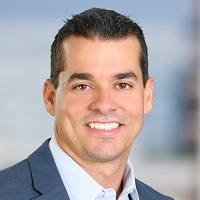Grow Your Investments Like Yale, Through a Self-Directed IRA
Yale's successful endowment focuses on alternatives. With a self-directed IRA, an individual investor could design a portfolio based on similar principles.


Endowment funds such as Yale University’s, which focuses on investment alternatives, have been great examples of multi-asset-class investing strategies over the last two decades. Case in point: Yale’s endowment experienced $759 million in investment gains for the year ending June 30, 2023, according to its 2022-2023 financial report.
In addition to diversification, alternatives also offer potential investment opportunities that often have a low correlation to volatility in traditional markets.
Yale’s fund has access to top-tier fund managers, but by adopting investment principles in relation to alternatives, individual investors can design their own portfolios so that they have the potential to achieve similar risk-adjusted returns. This strategy has paid off for the endowment, particularly when traditional equity and bond markets experience economic fluctuations.

Sign up for Kiplinger’s Free E-Newsletters
Profit and prosper with the best of expert advice on investing, taxes, retirement, personal finance and more - straight to your e-mail.
Profit and prosper with the best of expert advice - straight to your e-mail.
While one may invest in alternatives in many ways, an often-overlooked strategy is investing your tax-advantaged retirement savings. This can be done through an investment vehicle known as self-directed IRAs, or SDIRAs. These accounts aren’t distinct IRA types, but rather, “self-directed” refers to the account’s management style, in which investors or advisers take on management duties.
Traditional IRAs or Roth IRAs can be self-directed, but the main difference is that with SDIRAs, people can invest in alternative assets. Alternative assets may help reduce exposure to market volatility, as many have low correlations with public markets, and may be more suited for long-term strategies since many of these assets are less liquid.
Specifically, SDIRAs can hold alternative assets like private equity, hedge funds, commodities and marketplace loans, but real estate has historically been one of the most popular investments. Although there are restrictions on using a real estate property held in a SDIRA for personal use, you can invest in any type of property assets, including rental properties, land and commercial properties.
Access to alternative markets
Historically, many alternative assets required an accredited investor, an investor with a special status under financial regulation laws. However, we have seen many types of alternative investments that do not require an accredited investor. Today, many alternative investments are more broadly accessible. So, for example, if someone wants to put a $5,000 investment into alternatives, they have many options to choose from.
However, the opportunity for greater diversification comes with greater responsibility, as the investor does need to manage SDIRAs themselves. If managed prudently, this vehicle also offers the opportunity for greater returns, due to the wider variety of investment options, especially if you have expertise with a specific asset type.
Everyday investors frequently know the market better in the region in which they live, so whether it's real estate or an opportunity for a new restaurant, if they’re familiar with that particular space, they’re likely more comfortable allocating some of their retirement capital to that investment.
2024 outlook
Nearly half of all Americans are at risk of a financially insecure retirement, up from one-third in 1983, according to a 2024 Senate committee report. And, as BlackRock CEO Larry Fink emphasized in his 2024 letter to investors: Longer lifespans mean Americans need to save more money to live on throughout their sunset years. SDIRAs offer Americans a great opportunity to put their retirement savings to work beyond the standard target date funds that many 401(k)s favor.
It is critical, though, to consult a qualified financial adviser. SDIRAs offer the opportunity for individual investors to correlate their investments with their risk appetite. However, every investment has its complexities. For example, some alternative assets have low liquidity, meaning it can be difficult to access them or sell them quickly — if at all — without a loss in value.
Also, the IRS has strict rules about SDIRA-prohibited transactions, which are aimed at preventing direct personal benefits to the account holder or other disqualified people, such as family members. (For example, using an SDIRA to invest in a business that is owned by the investor’s spouse.) Prohibited transactions can result in tax penalties or losing the account’s tax-advantaged status altogether.
SDIRAs can open the door to a wide range of alternative assets with a return pattern that can potentially benefit the end investor. Ultimately, better access to these investments, which have proven successful for endowments like the Yale fund, gives investors another viable avenue to help grow their retirement savings and improve their overall financial wellness.
Related Content
Get Kiplinger Today newsletter — free
Profit and prosper with the best of Kiplinger's advice on investing, taxes, retirement, personal finance and much more. Delivered daily. Enter your email in the box and click Sign Me Up.

As head of self-directed accounts at Inspira Financial, a leading provider of health, wealth, retirement and benefits solutions, Jason leads strategic client relationships and helps expand Inspira's custody service solutions. With more than 8 million clients holding over $62 billion in assets under custody, Inspira works with thousands of employers, plan sponsors, recordkeepers, TPAs and other institutional partners — helping the people they care about plan, save and invest for a brighter future.
-
 Do You Need an AI Agent in Your Life?
Do You Need an AI Agent in Your Life?AI agents promise to be the next big thing in artificial intelligence, but what exactly do they do?
By Tom Taulli
-
 Learn if you should buy a new iPhone amid tariff concerns. Discover how to save money on the purchase.
Learn if you should buy a new iPhone amid tariff concerns. Discover how to save money on the purchase.Looming tariffs can make an iPhone purchase seem urgent. Here's what to do if you need another phone but want to save money.
By Laura Gariepy
-
 What Are AI Agents and What Can They Do for You?
What Are AI Agents and What Can They Do for You?AI agents promise to be the next big thing in artificial intelligence, but what exactly do they do?
By Tom Taulli
-
 Should You Buy an iPhone Now Before Tariffs Hit?
Should You Buy an iPhone Now Before Tariffs Hit?Looming tariffs can make an iPhone purchase seem urgent. Here's what to do if you need another phone but want to save money.
By Laura Gariepy
-
 Retiring Without a Partner? How Singles Can Maximize Their Savings
Retiring Without a Partner? How Singles Can Maximize Their SavingsRetirement can be expensive, especially when you do it alone, surveys show. But there are ways to maximize your retirement savings even when facing your second act without a partner.
By Kathryn Pomroy
-
 SRI Redefined: Going Beyond Socially Responsible Investing
SRI Redefined: Going Beyond Socially Responsible InvestingNow that climate change has progressed to a changed climate, sustainable investing needs to evolve to address new demands of resilience and innovation.
By Peter Krull, CSRIC®
-
 Here's When a Lack of Credit Card Debt Can Cause You Problems
Here's When a Lack of Credit Card Debt Can Cause You ProblemsUsually, getting a new credit card can be difficult if you have too much card debt, but this bank customer ran into an issue because he had no debt at all.
By H. Dennis Beaver, Esq.
-
 33 Stocks That Could Rally 50% or More This Year
33 Stocks That Could Rally 50% or More This YearAnalysts say these S&P 500 stocks have at least 50% price upside over the next year or so.
By Dan Burrows
-
 Stock Market Today: Dow Drops 971 Points as Powell Pressure Ramps Up
Stock Market Today: Dow Drops 971 Points as Powell Pressure Ramps UpPresident Trump is increasing his attacks against Jerome Powell, insisting the Fed chair cut interest rates.
By Karee Venema
-
 When Should You Hand Over the Keys — to Your Investments?
When Should You Hand Over the Keys — to Your Investments?The secret to retirement planning? "The best time to hand over the keys is before you’ve realized you need to hand over the keys."
By Maurie Backman